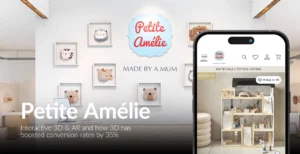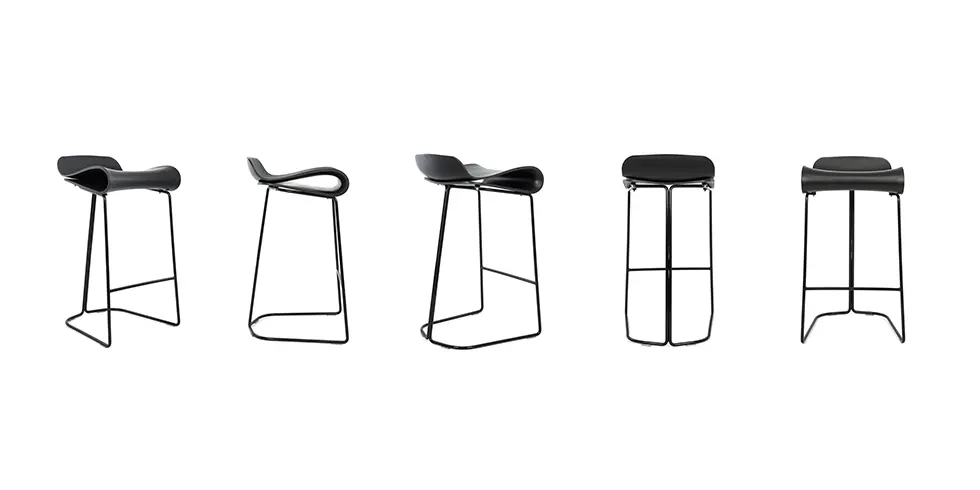Let’s face it, product images online offer a different experience from browsing products in a physical store. But you can provide a very engaging shopping experience by adding 360 photography to your online store.
360 product images allow customers online to see 360 degrees around the product. It’s becoming increasingly popular for online retailers as it offers a more interactive and realistic shopping experience, leading to better conversion and lower return rates.
If you’re interested in increasing your customer engagement, we encourage you to give 360 photography a spin. But before you do, learn more in this article on how it works and, more importantly, how to make it work for your business.
Why use 360 product images on your website
As opposed to regular product images, which are ‘flat’ and static, 360 photos significantly improve customer experience. Showing all angles of a product gives shoppers a far better idea of the look and dimensions.
You might see 360 images as a nice-to-have for your website, but make no mistake: they’ve become a must-have to convince shoppers to finalize their purchase online. This is supported by a mobile consumer survey by Adobe, where a whopping 42% of online shoppers said they were more likely to purchase an item from a website with 360 product photography.
How to take 360 photos
There’s more than one way to take 360 photos of your products. The quality of the images depends on the complexity of your production. You may keep it simple, but customers will see this immediately, since the rotation will look clunky.
The regular way to create 360 product images is to take several pictures of the product at different angles as it’s spinning around and stitch them together during post-production. Considering that stopping the platform for each shot gives you the best result, as the images can otherwise come out blurry.
Equipment to create 360 product images
Two things are absolutely necessary for capturing 360 product photos: a tripod to keep the camera steady at a set height and a fully rotating platform to capture all angles of a product. The latter can be ordered online or found in stores specializing in camera equipment. You can save money by using one that rotates manually, but it’s better to use an automatically rotating platform. You also need lighting and a white background to ensure optimal visibility and no distractions from the product.
The number of photos needed for a 360 image
There is no specific number of shots needed to create 360 images. As a rule it’s best to have as many as possible. So, you could use as few as 6 images, but preferably you’d work with higher quantities, like 36, 72 or even more images. The more photos you use, the smoother the final result will be.
Editing the product shots together
Once you feel you’ve taken enough pictures to create the 360, it’s time to stitch them together with image editing. This works in very much the same way a cartoon or a stop-motion film is produced. By showing the images in succession, you (re)create the rotation of the product.
Optimize the 360 image for online use
Before adding your 360 product photo to your website, you must ensure it’s ready for online use. Ensure the file is not too big, which can slow down your website or make it difficult to show the image. Either way, you’ll lose customers and are unlikely to get the expected results from your 360 image.
Also, consider how you want your spin image to be used. The easiest option is to let shoppers click to alternate to see the different angles, but that’s a far cry from how a 360 image should work. Alternatively, you can let the product turn around on itself like a video. Still, it’s best to make it interactive, whereby customers can drag and explore the different angles of the product as they wish.
The different types of 360 product photography
Traditionally, there are three types of 360 product images:
- Single-row spins
- Twin-axis spins
- Multi-row spins
Single row spins
Single-row spins are the most straightforward type of 360 images. It involves taking pictures of a product as it’s spinning in a single direction, usually from left to right.
Twin-axis spins
Twin-axis spin images show the product spinning along vertical and horizontal axes. This lets you show more angles of your products to your customers, but it also requires more pictures and editing. You can cover it by taking pictures from above at different angles, but it’s better to tilt the product vertically using robotic arms. This is, however, a lot more expensive.
Multi-row spins
Multi-row spins use pictures taken with the product spinning at three or more angles, for instance, horizontal and vertical and diagonal. This gives your customers even more ways to look at a product, increasing the conversion rate and lowering the return rate.
Create fully interactive 360 product photography with CGI
A fourth method for creating 360 product images is becoming increasingly popular in e-commerce: CGI-rendered images. Computer-generated images offer a wealth of new possibilities that are generally not available with 360 photography:
Fully interactive imagery for higher customer engagement
A computer-generated 3D model of a product is significantly more interactive than even the most intricate 360 image. Shoppers can drag and zoom everywhere they like on the product and see every detail to help them make a well-informed buying decision. It’s proven that it will lead to a rise in online conversions and at the same time a drop in returns.
Digital innovations are the future of e-commerce
Nowadays, digital innovations in e-commerce are far beyond the point of being no more than gimmicks. The modern consumer is critical and has come to expect a lot more in terms of customer experience online. Therefore, it’s not surprising that 72% of consumers are more likely to shop with digitally innovative retailers (according to “The Future Shopper” report by Wunderman Commerce).
More efficient production process
As you can read above, creating smoothly rotating, high-quality 360 images is expensive and demanding. You can imagine it isn’t very appealing or realistic to do the same for dozens or hundreds of products.
Computer-generated 3D models need only a fraction of the time and effort to create more detailed imagery. You can also easily produce additional color varieties. What’s more, large products that are hard to capture with 360 photography, such as heavy furniture, can now be turned into 360 images, thanks to CGI.
Fully compatible 3D models
In the case of Bright River, CGI product models are fully compatible with all viewers and configurators. So you can easily put them to good use on your website. You can even integrate them into AR apps which show the customer exactly how the product would look.
Interested in making 360 images work for your business?
360 images are a great way to take your e-commerce business to the next level. But it takes time to do create these for your products on a large scale and with high quality. Computer-generated 3D models are the best and most efficient solution for this.
Bright River can make it happen if you want to use CGI to create 360 content for all your products. Our editors can create large quantities of quality images daily using the latest technologies.
Do you want to know more about the endless possibilities of CGI for e-commerce? Let us tell you more about what it can do for your business and what we can do to make it happen. Plan a quick call with us to learn about all the benefits of using CGI for your business.


